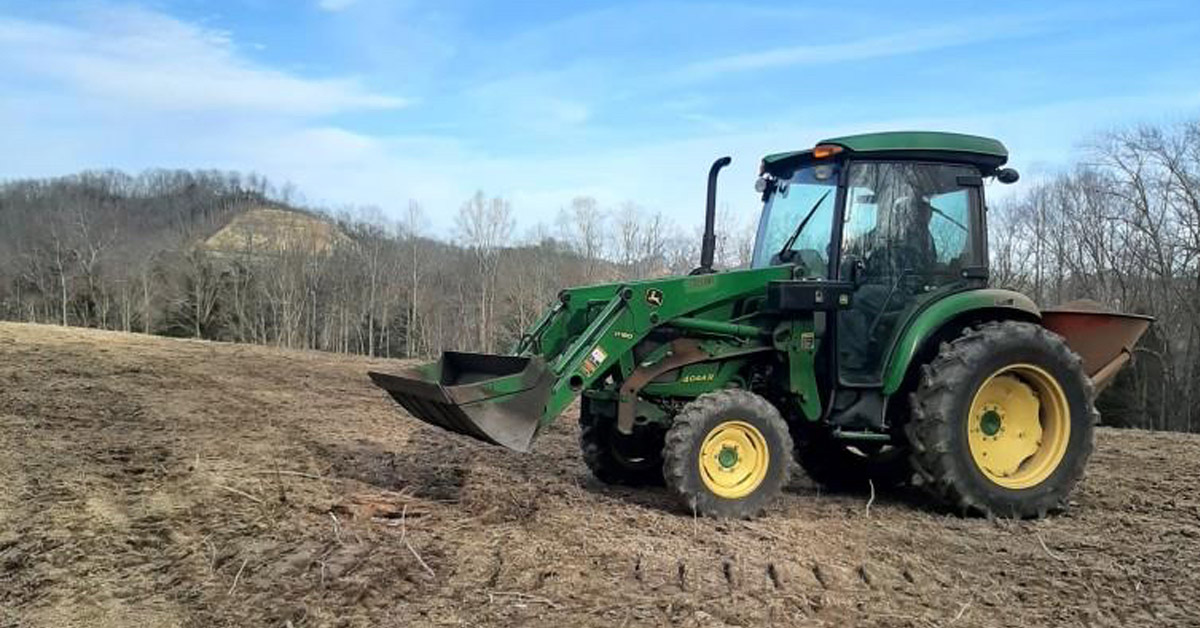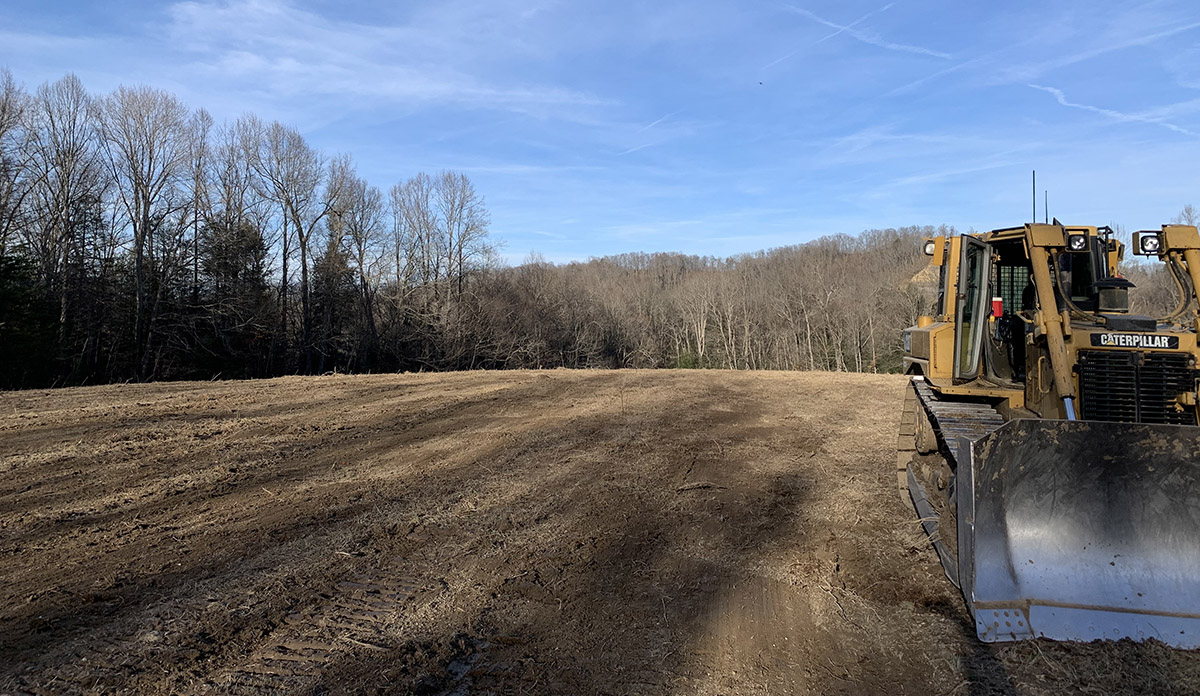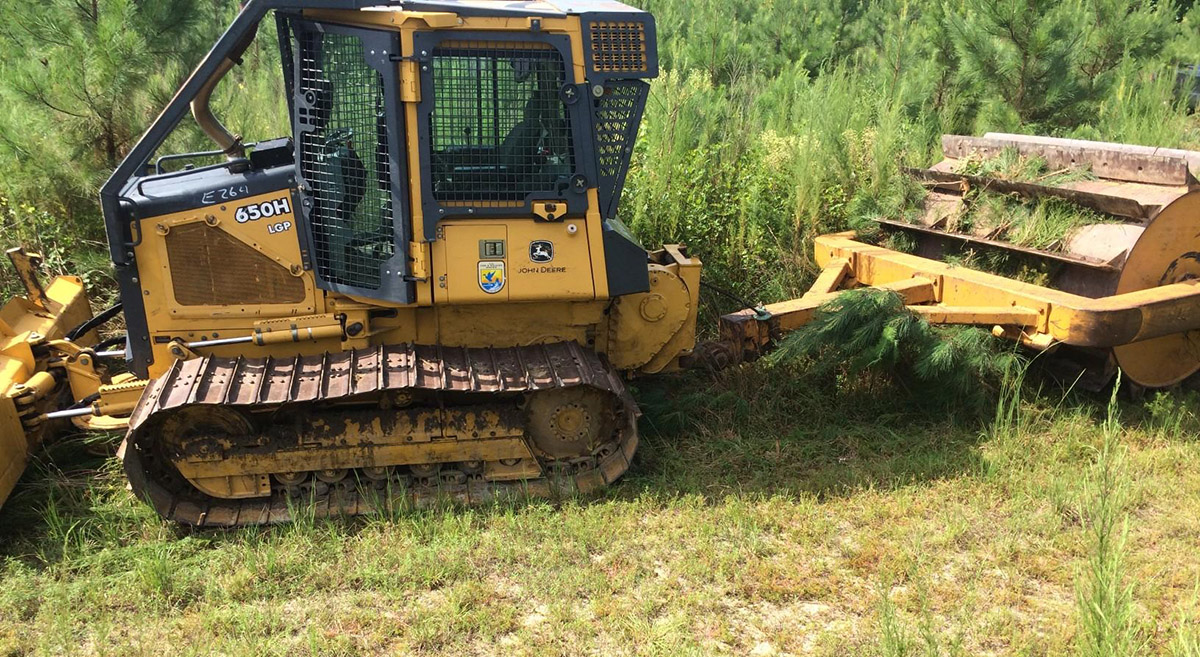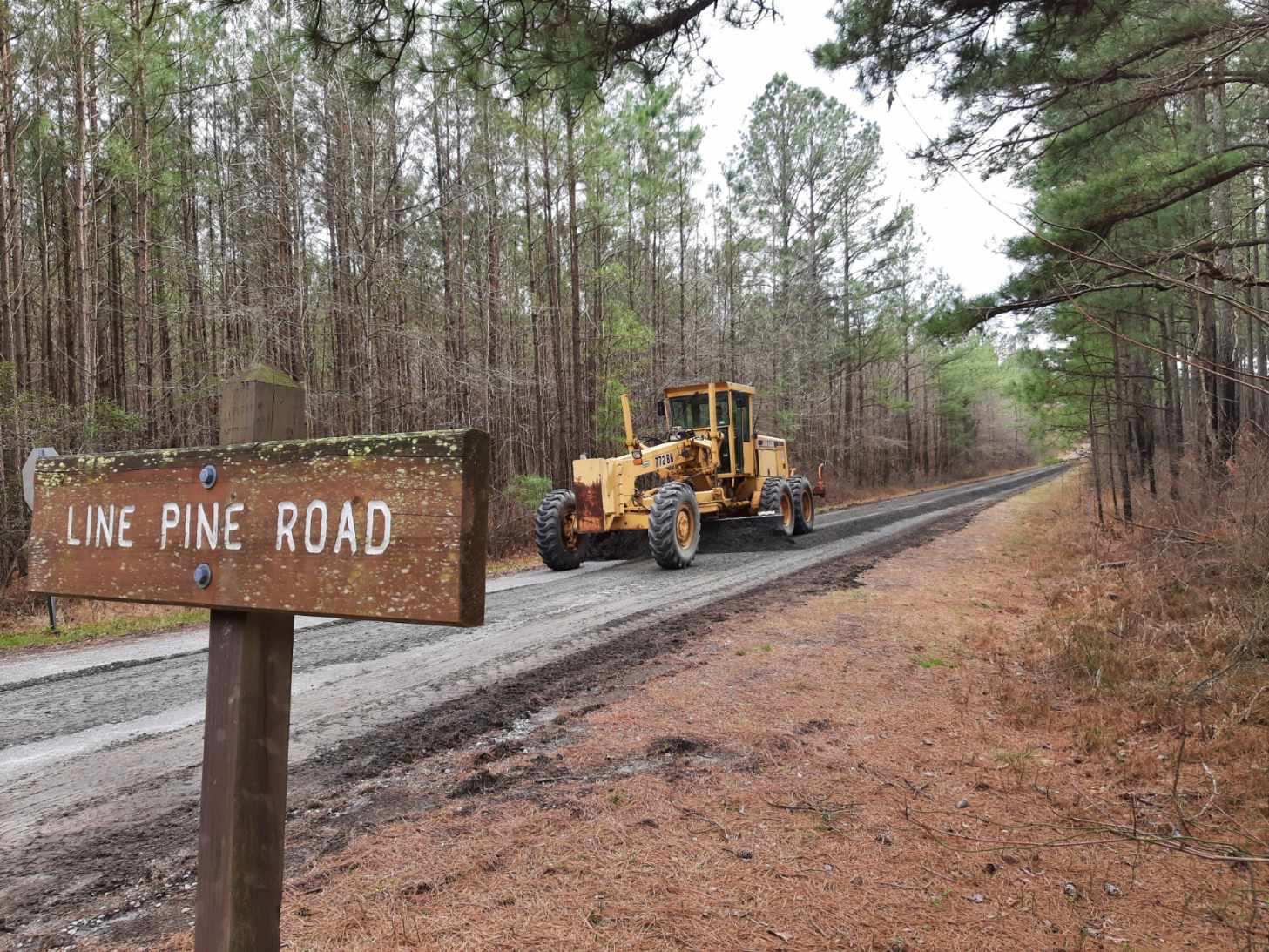
By Molly Kirk/DWR
Photos by Matt Kline/DWR and Tom Hampton/DWR
When Virginia Department of Wildlife Resources (DWR) Lands and Access staff apply land management practices on DWR’s Wildlife Management Areas (WMAs), they use a wide variety of strategies. Deciding what strategies to use and when involves a lot of consideration and takes into account many different long-term and short-term goals. Funds for this habitat work comes from hunting and fishing license, access permit, boat registration, and Restore the Wild membership sales.
Although specific practices may be applied on small or site-specific scale, part of the management process involves consideration of the impacts of management applications on surrounding landscapes. Managers assess long-term outcomes and implications of each application under the conditions present. In many cases, the short-term outcome may not be the ultimate goal as there is often a lag between application and achievement of the desired habitat results.
For example, clearcutting is conducted to regenerate shade-intolerant tree groups such as oaks and hickories that produce hard masts, or food for wildlife such as acorns and nuts. Results are not immediate, but clearcuts create conditions conducive to encouraging growth of mast-producing species and achieving the goal of creating a forest with a strong oak/hickory component for the future.
Habitat management techniques are divided into categories: mechanical, agricultural, forest management, and aquatic and wetland management, as well as a few others. We’ll talk first about mechanical techniques that DWR staff use when managing habitat on WMAs.
Bulldozing or Excavating
Bulldozing and excavating is the use of a bulldozer, front-end loader, track-hoe or similar earth-moving equipment to move dirt, soil, debris and other material. The goal of this application is to maintain and enhance a variety of habitats and infrastructure on WMAs.

These techniques are used to create and renovate wildlife clearings in forested and open land habitats, install fire lines, restore wetlands, and construct and maintain roads. Bulldozing is used to remove trees and other woody vegetation to create forest openings, which are maintained in native forbs and grasses to provide habitat for wildlife. Fire lines established during bulldozing are used to contain prescribed fire to meet habitat objectives. Excavators are used to restore and create wetlands by constructing dikes and to install water-control structures. Roads and trails are constructed and maintained with bulldozers and other heavy equipment. This practice is applicable statewide.
The operation of heavy equipment is relatively expensive and can also cause soil displacement if Best Management Practices (BMPs) are not implemented. Heavy equipment replace shovels, picks and other hand tools. Concerns for wildlife that are unable to quickly disperse from work areas can be mitigated with awareness of species presence and implementation of time-of-year restrictions.
Disking
Disking is cultivating the upper layer of soil with a disk or harrow so that the sod layer is broken up to expose bare soil. Farm tractors pulling implements are commonly used. Types of implements include disk harrows, chisel-point harrows, spring-tooth harrows, and chain harrows. The desired habitat goal for disking is to create and maintain an early successional grass/forb plant community.

This technique is commonly used in fields and forest clearings to reseed or establish new herbaceous vegetation. Disking is used to break up sod cover, prepare seedbeds, and create fire breaks for prescribed burning. When used as a fire break, disked lines may be left as bare soil, but often are seeded to wheat or rye as a green line. Disking to create early successional habitat should be timed to minimize the effect on wintering birds. Allowing vegetation to stand through the bulk of the winter months provides critical songbird winter cover. Fields are often managed by disking on a three-year rotation; this practice is applicable statewide.
Disking is relatively inexpensive and can result in enhanced growth of native forbs and grasses that are not dense, a condition preferred by quail and many other bird species. Similar habitat conditions can be created by lightly plowing. However, this approach often leaves the ground surface rough, and disking is required to smooth the surface. Prescribed fire can be used for similar effects in fallow field management. It should be noted that mowing is NOT a substitute for disking where bare ground or open structure is desired.
Drum Chopping
Drum chopping is the use of a heavy vehicle (bulldozer) to pull a large metal cylinder (drum) with longitudinal cutting blades to displace and cut woody stems. The drum is usually filled with water for additional weight. The goal of drum chopping is to maintain and enhance early successional habitats.

This technique is most often used in old fields or forest clearings where woody vegetation has grown too large to bush hog. Drum chopping is used to maintain early successional habitat by controlling the invasion of woody vegetation. The cutting blades of drum choppers break down woody vegetation and expose bare soil. Drum-chopped areas are usually burned in the year subsequent to chopping and this practice is applicable statewide.
Drum chopping is a relatively expensive practice, requiring the use of heavy bulldozer and special transportation equipment for hauling. Drum chopping is not practical in areas with large stumps, debris, stems over six inches in diameter, or on steep slopes, extremely wet areas, or areas with large rocks. Drum chopping can result in good growth of native forbs and grasses that are not dense, a condition preferred by quail and many other bird species; however, woody debris still remains in the chopped area, making it inaccessible to farm equipment.
With this practice, environmental concerns are minimal since soil disturbance is limited, and the remaining woody debris reduces erosion. The residual woody debris improves cover for a variety of invertebrates and small vertebrate species. Use of drum chopping in early successional habitat should be timed to minimize the effect on wintering birds. Allowing vegetation to stand through the bulk of the winter months provides critical winter cover to songbirds.
Recovering early successional habitats in brushy fields or cutovers often requires bulldozing, mulching or drum chopping. Prescribed fire compliments the use of these mechanical methods and can often be used alone to achieve similar results.
Mowing or Bush Hogging
Mowing or bush hogging refers to the use of a farm tractor equipped with a large rotary mower or a side-mounted sickle bar mower to cut herbaceous and woody vegetation in fields and forest clearings and along roads and trails to keep these areas in early successional grass/forb habitats. The goal of this application is to maintain and enhance early successional habitats, road edges, and associated habitats.

Mowing stimulates the herbaceous vegetation and prevents woody vegetation from growing and overtaking the field, which would cause a loss of the early successional herbaceous habitat. To avoid damage to nests and young wildlife, time-of-year restrictions should be implemented, avoiding nesting and brood-rearing seasons and allowing re-growth for winter food and cover. Mowing can also be used to keep woody vegetation from encroaching into roadways. Maintaining herbaceous cover along roads and trails creates linear habitats beneficial to many wildlife species for insect foraging, grazing, and nesting. This practice is applicable statewide.
Mowing is labor-intensive, but less expensive than other mechanical means often used to set back succession. Mowing slows the natural process of conversion of openings to shrubby cover and then to forested habitat as natural succession occurs. Mowing creates thatch and reduces bare ground. Alternatives to mowing include application of herbicides to kill invading woody vegetation and use of prescribed burning to stimulate herbaceous cover and kill woody vegetation.
Mulching (Hydro-Axe)
Mulching is a land clearing practice in which woody vegetation is reduced to chips by a rotary cutter-head mounted on a Bobcat or large rubber-tired loader. Mulching is used to create early successional habitat in areas that have become overgrown with woody vegetation.
This technique is used in old fields or forest clearings where woody vegetation has grown too large to bush hog. The cutter-head lightly disturbs the surface of the soil, mixing the chips with topsoil. This action stimulates the establishment of native forbs and grasses that provide food and cover for wildlife favoring early successional habitats. Mulching can also be used in cutover areas to maintain early successional habitat and is applicable statewide.
Mulching is a relatively expensive practice and is not practical in rocky terrain, wet areas, or on woody stems over six inches in diameter. Mulching does not kill woody vegetation, and stump sprouting will occur. Mulching results in good re-growth of native forbs and grasses that are not dense, a condition preferred by quail and other ground-nesting bird species. The woody chips and debris decompose within a few years, adding nutrients to the soil.
Depending on terrain, mulched areas can be disked and planted. Environmental concerns are minimal since soil disturbance is limited, and the remaining woody debris reduces chances of erosion. Returning brushy fields or cutovers to early successional habitat usually requires bulldozing or drum chopping where mulching was not practical. Prescribed fire compliments the use of these mechanical methods and can often be used alone to achieve similar results.
Road Construction
Roads are developed on WMAs by excavating and removing obstacles (e.g., rocks, debris, vegetation, and soil) on a predetermined path. Construction and maintenance are conducted by DWR staff, hired contractors, timber buyers, and cooperators. Bulldozers, motor graders, and excavators are the primary equipment used to shape side-slope and road surfaces. Roads are built from earthen materials located on-site and capped with either a natural or gravel-hardened surface.

WMA roads are used for travel throughout WMAs from public roads. WMA roads provide access for habitat management, wildfire suppression, recreational access, research studies, back country emergencies, and patrol. WMA roads may be continuously open, seasonally opened, or continuously closed to public vehicular traffic. WMA users utilize roads for hunting, angling, hiking, bicycling, and wildlife watching. The strategic placement of gravel, water-bars, broad-based dips, surface out-sloping, ditches, and culverts are considered and implemented during construction to control surface water drainage on roads and trails to prevent erosion. Roads developed exclusively for timber harvests are usually closed afterwards and their natural surface stabilized, employing a combination of Best Management Practices (BMPs) and agricultural techniques to prevent erosion. This practice is applicable statewide.
The development and maintenance of a permanent and properly constructed road system provides safe, long-term use and produces minimal negative environmental impact. Road construction is relatively expensive and planning is imperative to site roads with minimal impact to landscapes and wildlife resources. Use of BMPs reduces environmental impact and costs. Road construction can impact aesthetics, water quality, wetlands, flood plains, wildlife populations, habitats, unique geographical characteristics, and historical and cultural features. For public vehicular and management access, there are no practical alternatives to roads.



